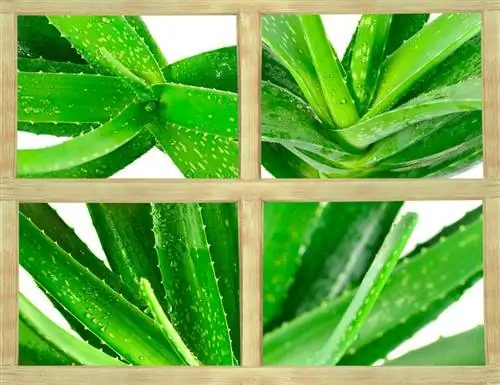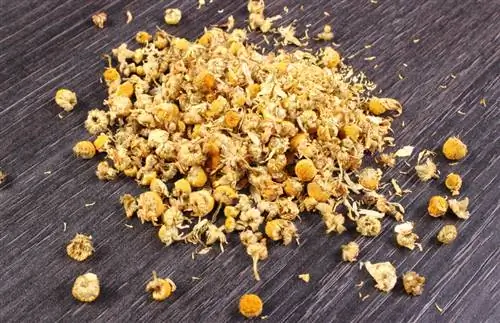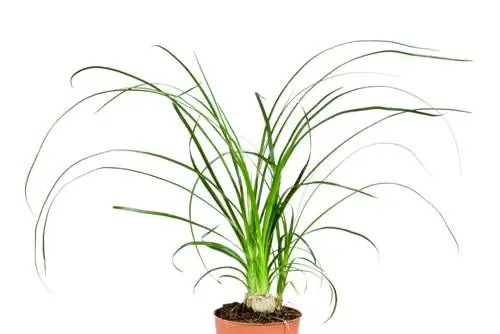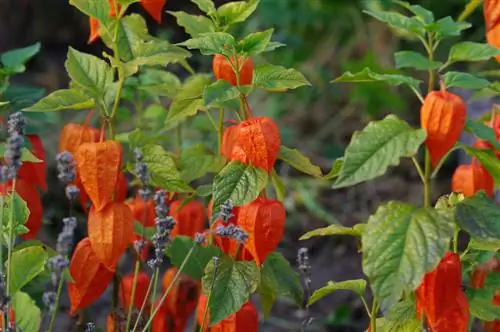- Author admin [email protected].
- Public 2023-12-16 16:46.
- Last modified 2025-06-01 06:02.
There are around 500 different types of aloe plants, but only real aloe vera, also called Aloe barbadensis, is considered a medicinal plant. If you want to benefit from the healing effects of aloe, you should buy the right plant.

How do I recognize a real aloe vera plant?
To recognize a true aloe vera, look for stemless or short stems, lanceolate, gray-green leaves (40-50 cm long, 6-7 cm wide) and 2 mm long teeth on the leaf edges. Yellow or orange flowers on inflorescences up to 60 cm long are also typical.
An important criterion for differentiation is the bitter taste of real aloe vera. But of course you shouldn't cut off a leaf of the plant and try it if you want to buy aloe vera. So you need to focus on the external appearance. In addition, the taste depends on the watering behavior and is often milder in cultivated forms than in a wild plant.
This is what real aloe vera looks like
The real aloe vera only has a short stem or is even stemless. The lanceolate, smooth leaves are around 40 - 50 cm long and around 6 - 7 cm wide. They are grey-green, sometimes slightly reddish, and grow in dense rosettes.
The approximately 2 mm long teeth on the edges of the leaves are characteristic. The yellow or orange flowers sit on inflorescences up to 60 cm long. The aloe vera multiplies itself through runners. Its healing effect only develops at the age of around four years.
The healing effects of aloe vera
The anti-inflammatory and disinfectant effects of aloe vera are particularly outstanding. That's why the gel (juice) from the leaves of this plant is often used for a wide variety of skin problems. It also has a wound-healing, moisturizing and soothing effect.
Aloe gel is an ingredient in many skin care products and even helps heal burns. Other areas of application include neurodermatitis, psoriasis or herpes, but also bruises, acne or abrasions. When taken internally, aloe gel relieves constipation, but in higher doses it can also cause diarrhea and is slightly toxic.
The possible uses of aloe vera:
- Burns
- Sunburn
- Abrasions
- Acne
- bruises
- Neurodermatitis
- Psoriasis
- Herpes
- Constipation
Tip
For internal use, you should use ready-made preparations (€26.00 on Amazon) such as drops or tablets, as an overdose can definitely lead to poisoning.






